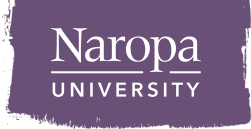
Honoring Diversity in Native America
by Belinda Eriacho, Diné (Navajo) and A:shwii (Zuni), MPH and MT
Since 1990, the month of November is designated as Native American Heritage Month. I join Naropians as we celebrate the richness and diversity of all Native American tribes and acknowledge the contributions of the Native Americans advocates, athletes, politicians and so much more. We celebrate the advocacy of?Elouise Cobell?(“Yellow Bird Woman”) of the Blackfoot Nation who fought tirelessly for government accountability for the mismanagement of?Indian Trust Funds. US Olympian?Bill Mills, who won a gold medal at the 1964 Olympics in Tokyo, Japan. The prolific legislator,?Ben Nighthorse Campbell, a member of the Northern Cheyenne Tribe of the 106th Congress. We also highlight the contributions and the hope of the next generation of Native Americans leading tribal nations, like Dr. Lyla June Johnston, a musician, scholar, and?organizer.
“…we were active agents in shaping the land to produce prolific abundance.”?
~ Lyla June, September 29, 2022
There are several tribes who called Colorado home, including the Hinono’eiteen (Arapaho), Tsêhéstáno (Cheyenne), Oc’eti S’akowin(Sioux),?Kiowa, C?ariks i C?ariks (Pawnee), Sosonih (Shoshone), Ndee (Apache) and other Ancestral Puebloan nations.
Within the State of Colorado, there are two federally recognized tribes, the Ute Mountain and the?Southern Ute. The Ute Mountain Ute Tribe, also known as the?Weenuche Band of Ute Nation?are located on the western side of the Rocky Mountains. The Weenuche ancestral homelands’ extended north from New Mexico to Utah and Colorado. The Southern Ute are comprised of the Mouache and the Caputa bands with their headquarters located in Ignacio, Colorado.iv We celebrate our neighbors the Ute tribal nations, who refer to themselves as the Núuchi-u or Nuche, meaning the “Mountain people”. The origin of their present name, “Ute” is believed to come from the Spanish word, “Yuta”. To truly appreciate and honor the Ute people, it is important to understand their historical perspective. By acknowledging their past, present, and future, we can engage with them in a meaningful and respectful way.
There is debate about the origins of the Ute by western anthropologists. Some indicating they came from California, others from Colorado. However, the Ute have their own origin story about Sinawav (The Creator), giving Coyote a sack and asking Coyote to be sure to open the bag until he arrived at a sacred location. Curiosity got the best of Coyote and he peeked into the bag to see what was inside. As we opened the bag, people began jumping out of the bag
speaking different languages. The only people that remained in the bag were the ancestors of Utes who were placed in the mountains, the sacred location.
Individuals of Ute lineages include, R. Carlos Nakai, Native American flutist, Joseph Rael, dancer, author, and spiritualist, along with a list of chiefs and leaders like, Chief Ouray, Buckskin, Severo, Ignacio, Buckskin Charley, Teenokuhu, Chipeta, Colrow, Niwot,?and Sapiah.
A “federally recognized tribe” implies that as a tribal entity they are afforded the opportunity to have a government-to-government relationship with the United Sates, with responsibilities, powers, limitations, and obligations attached to that designation, and eligibility for federal funding and?services?as compensation for the seizure of their ancestral lands and resources.
As we celebrate these tribal nations, we invite our community to learn about cultural appreciation as a way of understanding another’s culture and gaining a broader perspective in order to connect cross-culturally. Here at Naropa University we embrace the values of justice, equity, diversity, and inclusion. We invite you to explore ways you can broaden your perspective of these original people by, learning their culture from their perspectives, examining your own culture, listening first to understand, consider the context of cultural differences, and to share with others your own?culture.
Here are additional resources to learn more about the Ute in Colorado –
Denver Public Library –?Ute Removal and The Hunt Treaty – The Agreement a Buffalo Makes When Pierced with Arrows
Main Frame Digital. Ute History documentary –?Spirit of Nuche
Simmons, Virginia McConnel. The Ute Indians of Utah, Colorado, and New Mexico. University Press of Colorado. 2000.
TEDx Talks.?Ute Creation Story: Larry Cesspooch at TEDxParkCity
?




